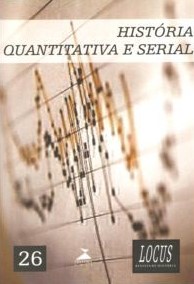Categories of differences: occupation, “race” and social condition in 19th century Brazil
Published 2020-08-12 — Updated on 2021-04-28
Versions
- 2021-04-28 (2)
- 2020-08-12 (1)
Keywords
- Social inequality,
- Social mobility,
- Post-colonial societies,
- Census categories,
- Occupation
- Brazil,
- 19th Century ...More
How to Cite
Copyright (c) 2020 Paulo Roberto Ferreira

This work is licensed under a Creative Commons Attribution 4.0 International License.
Abstract
The aim of this article is to analyze social inequality in 19th century Brazil, using nominative lists of inhabitants produced during the 1830 decade. First I use HISCO and HISCLASS as an initial approach to social inequality in a pre-industrial non-European society. Then, I introduce a discussion about the necessity of considering other dimensions of social life to be able to build an accurate system to measure social status and social mobility in colonial and post-colonial societies. I analyze race and social condition (slave, freed and free status) as important categories in Latin American and other Portuguese colonial areas.

